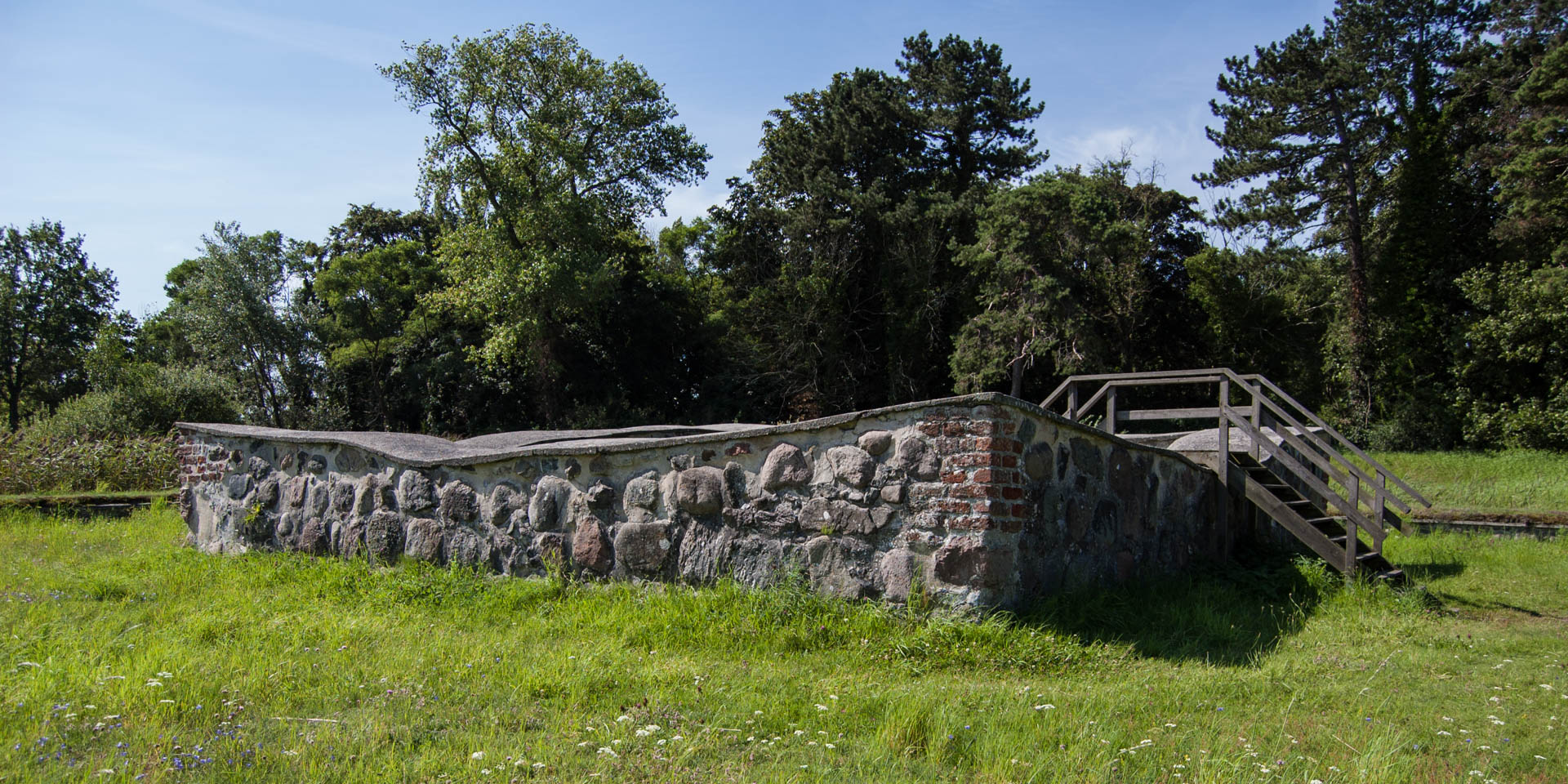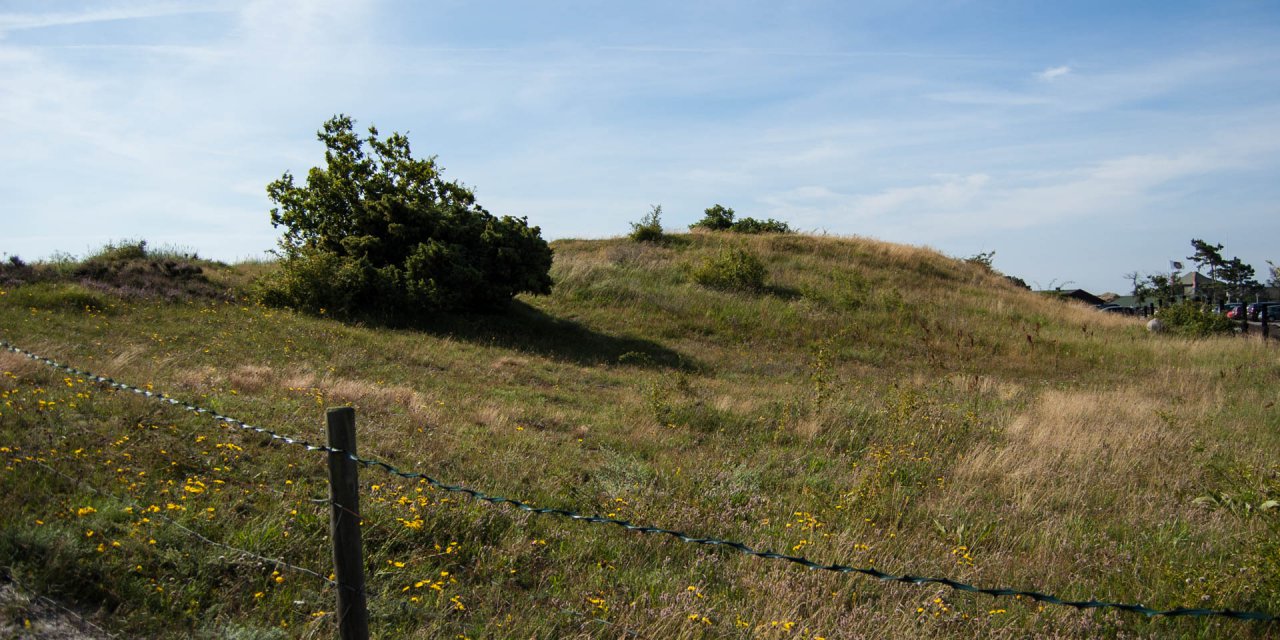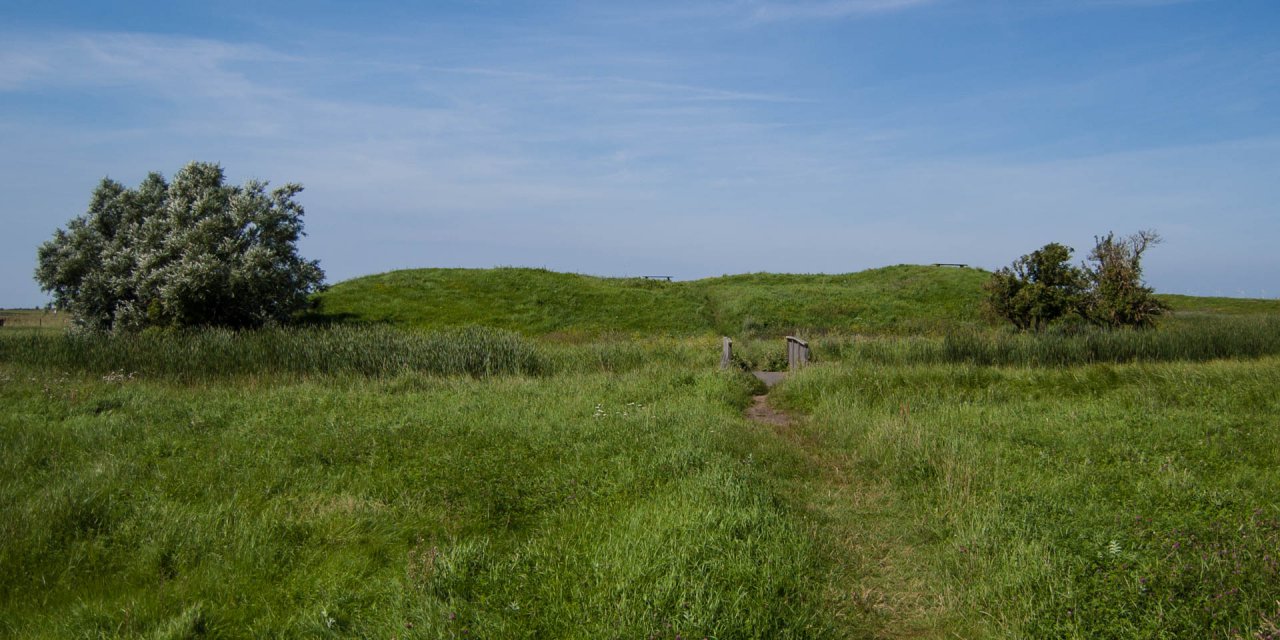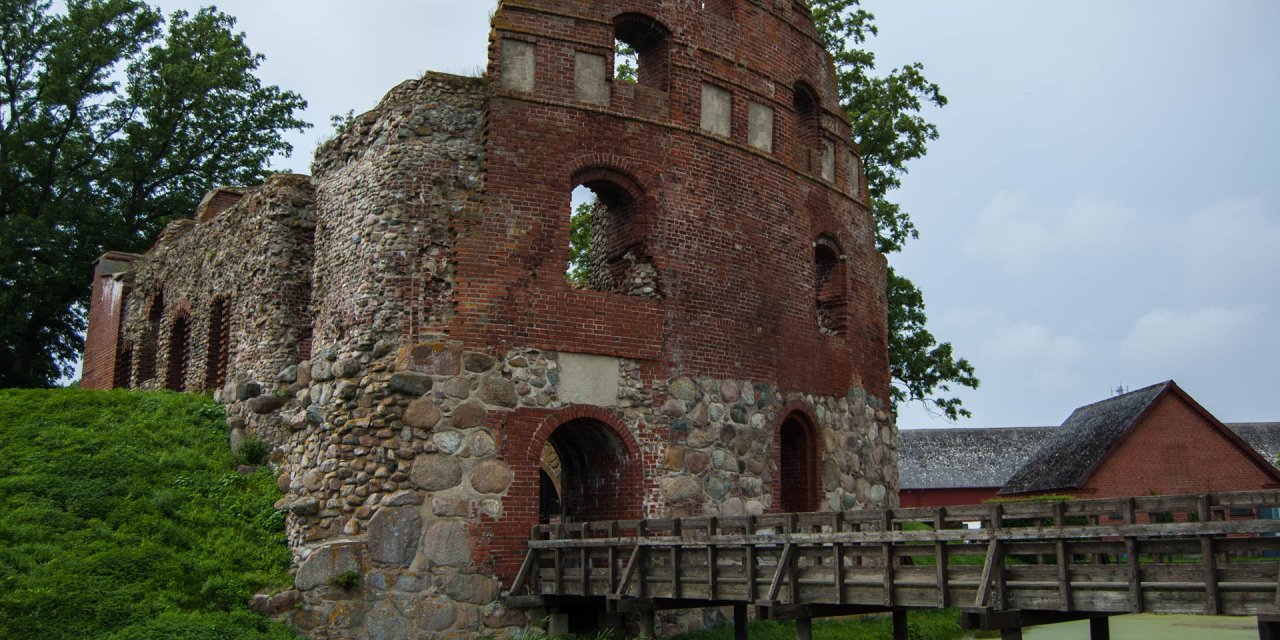

Falsterbohus Borgruin
Castle ruin in Falsterbo
Falsterbohus Borgruin is the ruin of the castle Falsterbohus from the 14th century. It is located in close proximity to the beach of Falsterbo.
Today the only remains left are the circumferential walls of the castle and the moat. Findings from the first archaeological excavations are located in Lunds Universitets Historiska Museet and at the Falsterbo Museum. The findings with greater historical significance are located in Stockholm.
The castle was formerly a nearly square courtyard of 33x28 meters, which was surrounded by a high wall. It was built on an artificial island of 42x42 meters, which was surrounded by a nearly 12 meter wide moat. Around this inner moat was a mound, which in turn was surrounded by an outer moat of equal width.
At the seaside of the outer moat was a stone barrier to protect the castle against storm and flood.
Chronology
Falsterbohus is first mentioned in connection with the destruction of the castle in Skanör. A few years later, a new castle was built in Skanör, which was also destroyed. Then it was rebuilt a third time; bigger and better secured.
Towards the end of the 14th century, the royal reeve moved from the castle in Skanör to the castle Falsterbohus. In connection to the relocation of the Skånemarknaden (Scania market). The Skånemarknaden was a fish trading market and at the time one of the main sources of income of the Danish crown.
With decreasing importance of the marketplace, the seat of the reeve was moved to Malmö at the end of the 15th century. The castle Falsterbohus lost its strategic importance and was abandoned.



